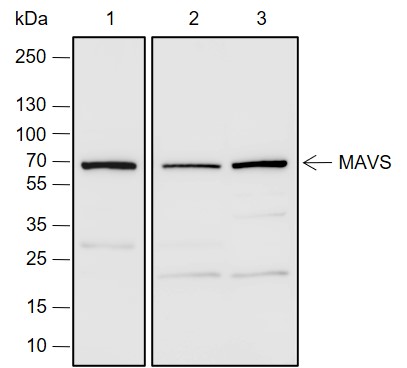Background
The mitochondrial antiviral signaling protein (MAVS, VISA) contributes to innate immunity by triggering IRF-3 and NF-κB activation in response to viral infection, leading to the production of IFN-β. The MAVS protein contains an N-terminal CARD domain and a C-terminal mitochondrial transmembrane domain. The MAVS adaptor protein plays a critical and specific role in viral defenses. MAVS acts downstream of the RIG-I RNA helicase and viral RNA sensor, leading to the recruitment of IKKε, TRIF, and TRAF6. Some viruses have evolved strategies to circumvent these innate defenses by using proteases that cleave MAVS to prevent its mitochondrial localization.
Cellular location
Mitochondrion


